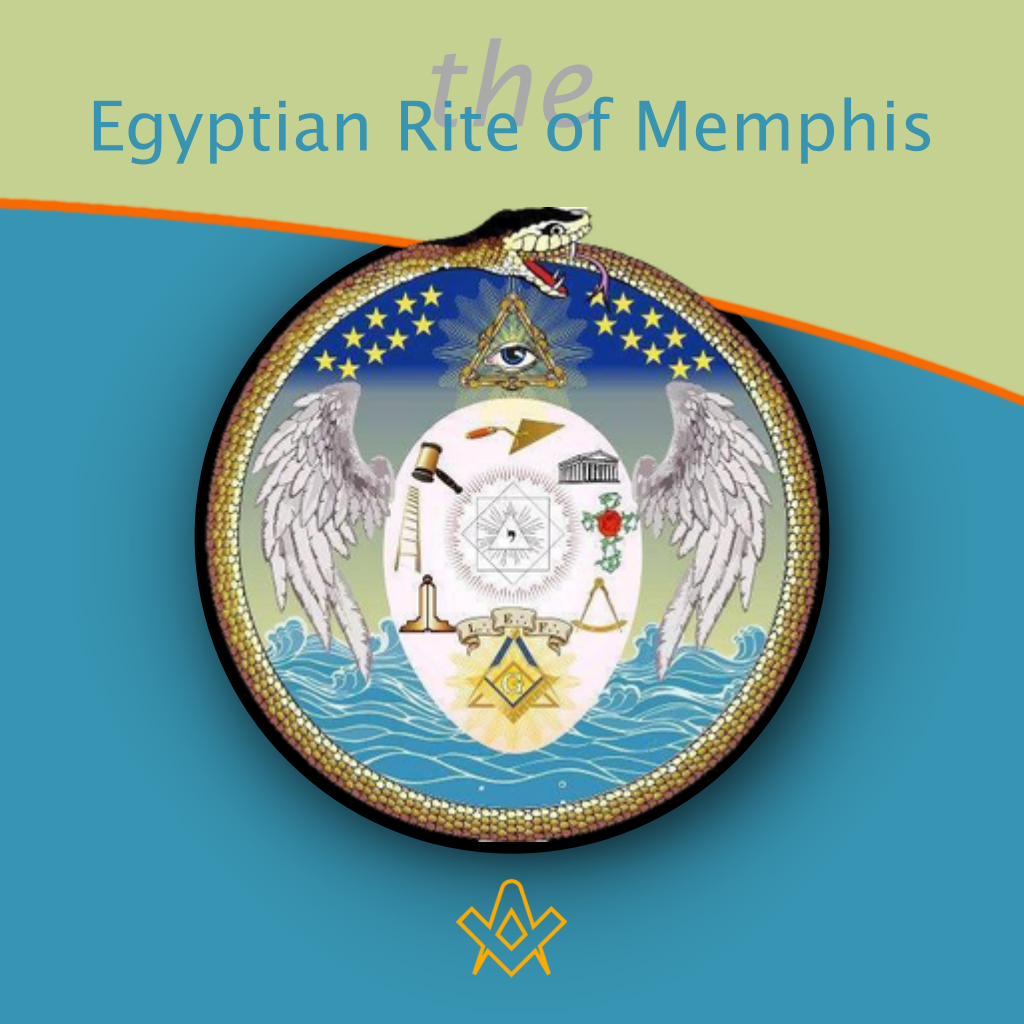Over time many Masonic Rites have developed, each Rite having its own history, legends, and rituals.
Some of them are still practiced today, and others have ceased to exist.
The best known and at the same time the most practiced Masonic Rites are the Ancient and Accepted Scottish Rite and the York Rite.
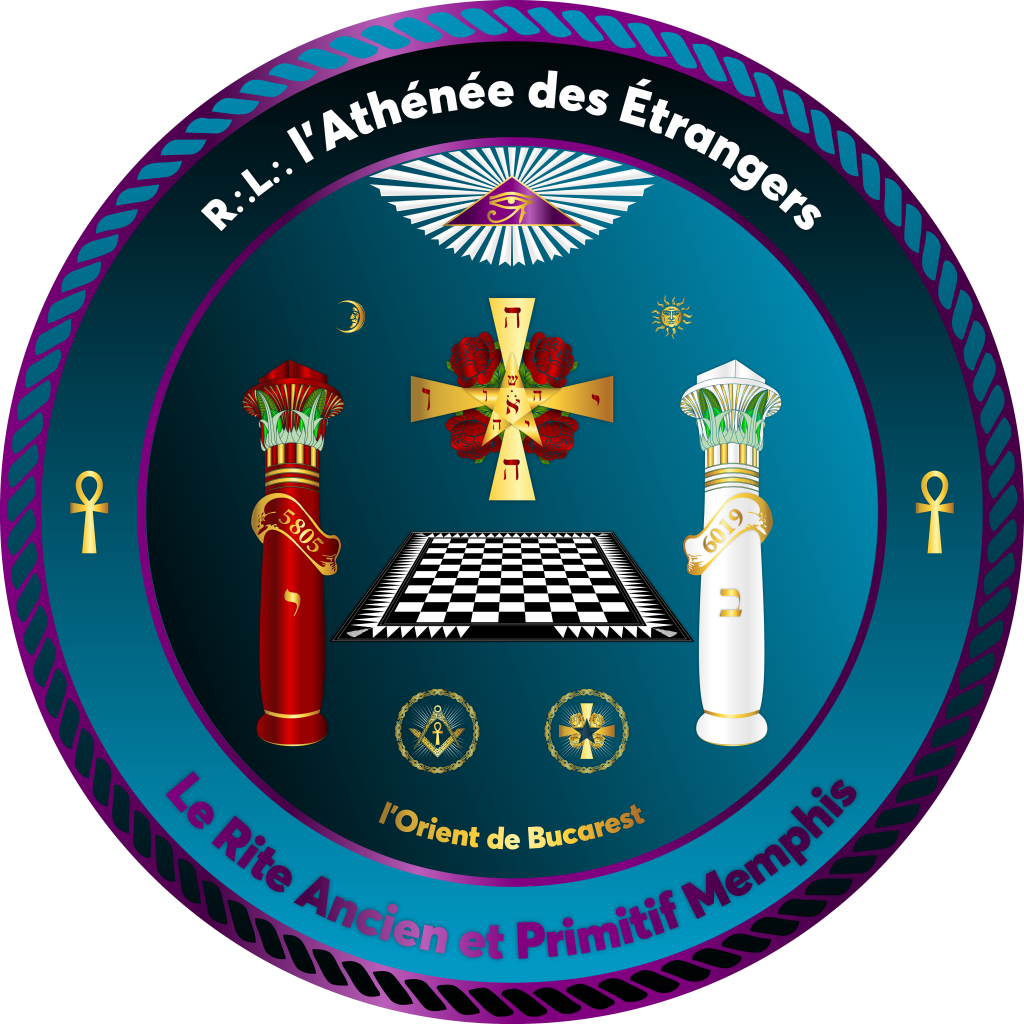
Among other Masonic Rites, we can find the Rite of Memphis, to which this article is dedicated.
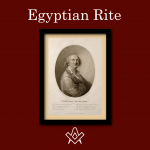
Egyptian Rite
Egyptian Freemasonry, founder Cagliostro was famed throughout eighteenth century Europe for his reputation as a healer and alchemist
more….
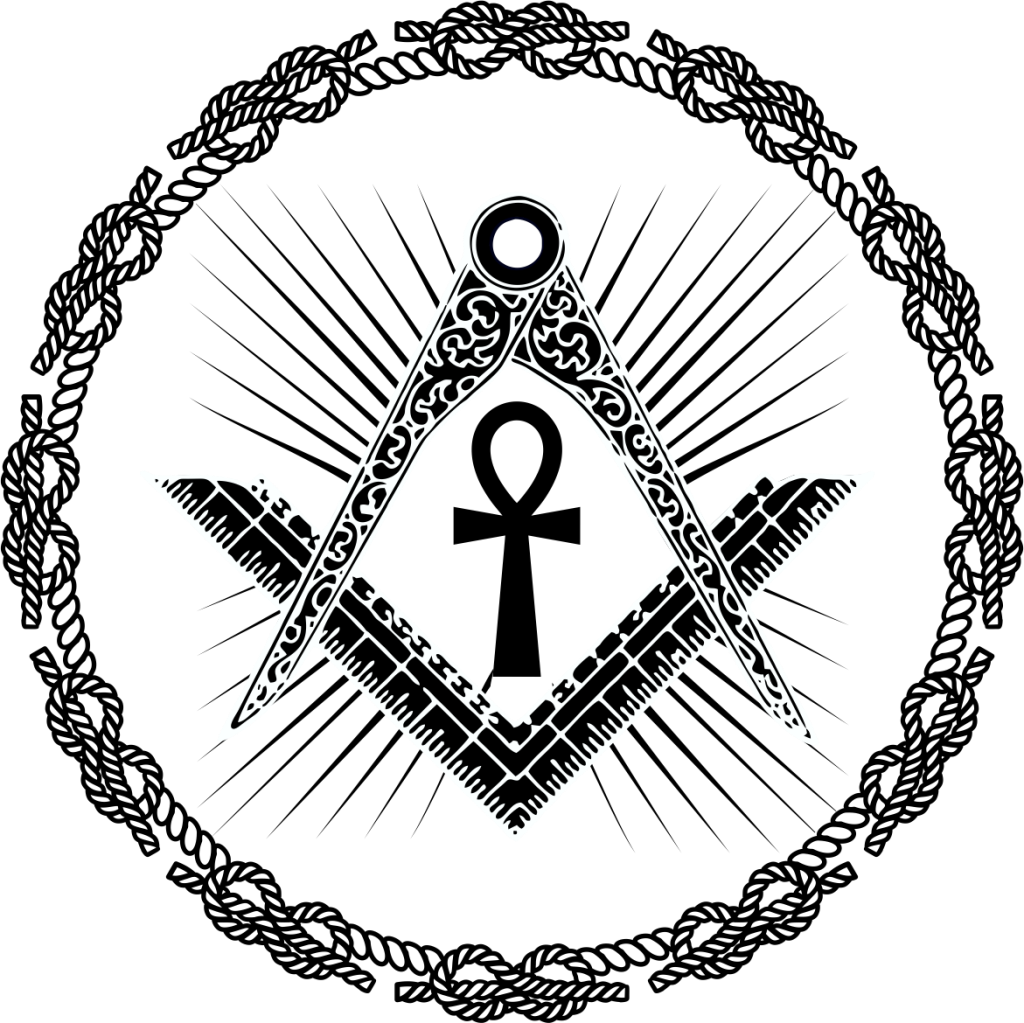
Memphis, located south of the Nile on the west bank, about twenty-four kilometres from the current city of Cairo, was the ancient capital of Lower Egypt, the place where the Lesser Mysteries of Isis and Serapis and the Greater Mysteries of Osiris were practiced.
It was associated with the pyramids, the temples, and the necropolises. Such an association would not have been possible without the context of a centre of religion, philosophy, science, culture, economy, education, and arts.
Thus, Memphis becomes a point of maximum importance for Ancient Egypt.
It is therefore not surprising that this Masonic Rite bears the name “Memphis”, stating its origin in the Ancient and Primitive Egypt.
The legend of the founding of the Rite, which we will reproduce below, can be found in the work entitled “Le sanctuaire de Memphis, ou Hermès” (The Sanctuary of Memphis or Hermes), written by Jacques-Étienne Marconis de Nègre.
Of course, the legend could be confused with its history, but the legend makes its history more interesting.
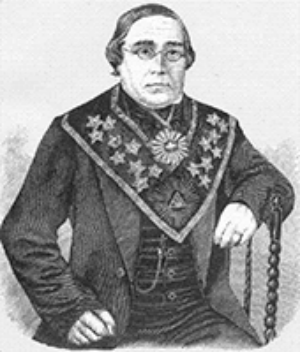
Jacques-Étienne Marconis de Nègre
The Templars acquired the most valuable part of Masonic Science from the Brethren of the Orient, whose founder was an Egyptian sage named Ormus, converted to Christianity by St. Mark.
Ormus purified the Egyptian doctrines in accordance with his Christian ideas. At the same time the Essenes and other Jews founded a school of science conforming to the teachings of Solomon and joined Ormus.
The disciples of Ormus up to 1118 were the only trustees of the ancient doctrines of Egypt, purified, of course, by Christianity and the teachings of Solomon.
They communicated these doctrines to the Templars. Consequently, they were known as the “Knights of Palestine” or “Brothers of the Rosy Cross of the Orient”.
These Brethren are claimed by the Rite of Memphis as its immediate founders.
In 1550, eighty-one of them, under Garimont, went to Sweden, presented themselves to the archbishop of Usal, and explained their Masonic doctrines to him.
It was these eighty-one Masons who established Masonry in Europe.
After the death of Jacques de Molay, the Scottish Templars, who had become apostates at the instigation of King Robert the Bruce, joined a new Order which this king had founded, and which resembled in many ways the Order of the Templars.
In this new Order that one must search in order to find the origin of Scottish Masonry and even other Masonic Rites.
The Scottish Templars were excommunicated by Harminius in 1324. This date agrees with that given by Brother Chereau, concerning the separation of the Edinburgh Masons from those of Memphis, which took place in 1322.
The Masons of Memphis remained faithful to the ancient tradition, the others founded a new Rite under the name of Heredom of Kilwinning or of Scotland.
Thus, we find at the end of the fourteenth century two existing Rites – the Rite of Memphis (or the Orient) and the Scottish Rite.
The one and the other continued to find followers in every part of Europe.
From a disputed historical point of view, the foundations of the Rite were laid in Egypt in 1798 with the penetration of Egypt by Napoleon’s French armies.
It was in Egypt also that Napoleon was supposedly initiated into Freemasonry. Through the Masonic Lodges, Napoleon’s soldiers transmitted a message of tolerance and acceptance of all people, regardless of their culture and traditions, thus being a point of unity and of universal dialogue.
A Masonic Rite that was shaped after the specifics of the area was needed, thus making the Masonic principles accessible to everyone and this is how the Rite of Memphis would have been born.
According to some Masonic historians, the Rite of Memphis would have actually been born from the fusion between the various esoteric Rites originating in the south of France, especially the Hermetic Rite of Avignon, the Primitive Rite of Narbonne and the Rite of African Architects of Bordeaux with a Gnostic Rite of Egyptian origin, being constituted by Jacques-Étienne Marconis de Nègre as a complement to a preceding Rite, namely the Rite of Misraim.
In the following paragraphs, we will take a look at the generally accepted chronology of the notable events of the Rite of Memphis and of how it spread throughout several continents and countries.
THE RITE OF MEMPHIS IN FRANCE AND BELGIUM
∴ 1798 – The initiation of Napoleon Bonaparte and General Jean-Baptiste Kléber in the mysteries of the Rite of Memphis, during the French military campaign in Egypt.
∴ 1814 – The Rite of Memphis was brought to France by Bro. Samuel Honis.
∴ 1815 – The founding of “Disciples of Memphis” Lodge in Montauban, with Samuel Honis, Gabriel-Mathieu Marconis de Negre, Baron Dumas, Marquis de la Roque and Hippolyte Labrunie as founders.
∴ The transformation of “Disciples of Memphis” Lodge into a Grand Lodge of the same name.
∴ 1816 – The closing down of the Lodges that made up the Grand Lodge and the Rite of Memphis.
∴ 1838 – The Rekindling of the Lights of the Rite of Memphis, with Jacques-Etienne Marconis as Grand Hierophant, by founding the “Osiris” Lodge in Brussels.
∴ Reawakening of “Disciples of Memphis” Lodge in Brussels.
∴ The founding of “Bienveillance” Lodge, led by Brother Viterbole, jeweler to the King of France.
∴ The founding of “Osiris” Lodge in Paris.
∴ The first assembly of the “Supreme Power of the Order”, in which Marconis de Negre, Grand Hierophant, installs the first three administrative structures of the Order: The Sanctuary of Memphis, the Mystic Temple and the Sovereign Grand Council.
∴ 1839 – The publication of the Regulations and Constitution of the “Osiris” Lodge, which define the administration of the Order and the list of members which included 54 names.
∴ The founding of “Philadelphs” Lodge in Brussels.
∴ The founding of “Heliopolis” Lodge in Brussels.
∴ 1840 – The founding of “The Sages of Heliopolis” Capitular Lodge in Brussels.
∴ Creation of the Capitular Lodges “Palestinian Knights”, in Marseilles and “Disciples of Menes”, in Paris.
∴ 1841 – The closing down of the Lodges in France, due to the pressure exerted by the Grand Orient of France.
∴ 1843 – Structures of the Order are functional in North America, Argentina, Turkey and Romania.
∴ 1848 – The Rekindling of the Lights of the Rite of Memphis in France.
THE RITE OF MEMPHIS IN THE UNITED KINGDOM
∴THE REFORMED RITE OF MEMPHIS
∴ 1850 – The founding of “Disciples of Menes” Lodge, soon transformed into the “Grand Lodge of Philadelphs”.
∴ 1851 – The transfer of the Government of the Rite of Memphis to Great Britain, Marconis being forced to close down the Lodges in France after the coup of Louis-Napoleon Bonaparte.
∴ The Memphis Lodges in Great Britain conducted their work in French, being mainly composed of French republican refugees.
∴ 1853 – The election of Philippe Berjeau as Grand Master of the Grand Lodge of Philadelphs and representative of the Grand Hierophant for Great Britain and Ireland.
∴ 1853-1856 – The establishment of several Memphis Rite Lodges.
∴ 1857 – A schism occurred between the Republican Lodges and the Esoteric Lodges.
∴ Benoît Desquesnes establishes the Reformed Rite of Memphis.
∴ Jean-Philippe Berjeau lays the foundations of the Oriental Rite of Memphis in 33 degrees.
∴ The Reformed Rite of Memphis worked only in the degrees of the Blue Lodge, 1°-3°.
∴THE ANCIENT AND PRIMITIVE RITE
∴ 1872 – The establishment of the Sovereign Sanctuary for Great Britain, with John Yarker as Grand Master General.
∴ John Yarker received a patent from Harry J. Seymour authorizing him to confer the 4th-33rd degrees of the Rite of Memphis.
∴The Ancient and Primitive Rite did not include the symbolic degrees, 1°- 3°.
∴The Sovereign Sanctuary of John Yarker nominated Giuseppe Garibaldi, Past Grand Master of the Grand Orient of Italy, and Harry J. Seymour as Honorary Members.
∴ 1881 – John Yarker received a patent from the Reformed Rite of Misraim in exchange for a patent from the Memphis Rite; The appointment of General Giuseppe Garibaldi as Grand Hierophant General of the two Rites, now unified as Memphis-Misraim.
THE RITE OF MEMPHIS IN THE UNITED STATES OF AMERICA
∴ 1856-1857 – Marconis’ travels to New York and the founding of the 94th Degree Sovereign Grand Council of the Rite of Memphis, with David McLellan as Sovereign Grand Master.
∴ 1861 – David McLellan resigned from his position as Grand Master and Harry J. Seymour assumed the Sovereign Grand Council.
∴ 1862 – The first meeting of the Sovereign Sanctuary of the United States.
∴ The admission of the Rite of Memphis into the Grand College of Rites and the recognition of the Sovereign Sanctuary of the United States by the Grand Orient of France.
∴ 1865 – The reduction of the degrees of the Rite of Memphis from 95 to 33 by the Sovereign Sanctuary of the United States, according to the agreement between the Grand Orient of France and Marconis. The Rite of Memphis receives a new name “The Ancient and Primitive Rite of Masonry”.
∴Sovereign Sanctuary established relations with the Grand Orient of Italy, led by Giuseppe Garibaldi.
∴ 1866 – The breaking of relations between the Sovereign Sanctuary of the United States and the Grand Orient of France.
THE RITE OF MEMPHIS IN EGYPT
∴ 1863-1864 – Marquis Joseph de Beauregard receives a patent from Marconis to establish a Sovereign Sanctuary of the Rite of Memphis in Egypt under the name of “The Grand Orient of Egypt”.
∴ Joseph de Beauregard rejected the reduction of degrees applied to the Order in France.
∴ 1867 – The election of Prince Halim Pasha as Grand Master of the Sovereign Sanctuary.
∴ Foundation of “Menes” Lodge in Cairo.
∴ The authorization given to the Grand Orient of Egypt to confer the degrees 1°- 90° and to establish Lodges, Chapters, Areopagus, and Consistories.
∴ 1869 – Memphis Rite became dormant.
∴ 1873 – The Grand Orient of Egypt resumed its activity under Grand Master Solutore Avventore Zola.
∴ 1874 – The authorization given to Soluttore Avventore Zola to assume the dignity of Grand Hierophant 97° of the Rite of Memphis, with the consent of Joseph de Beauregard, who remained one of the main Conservative Grand Patriarchs.
∴ 1876 – The founding of the Egyptian Symbolic Grand Lodge and the National Grand Lodge of Egypt.
∴ Solutore Avventore Zola conferred the 95° and 96° degrees to Giuseppe Garibaldi.
THE RITE OF MEMPHIS IN ROMANIA
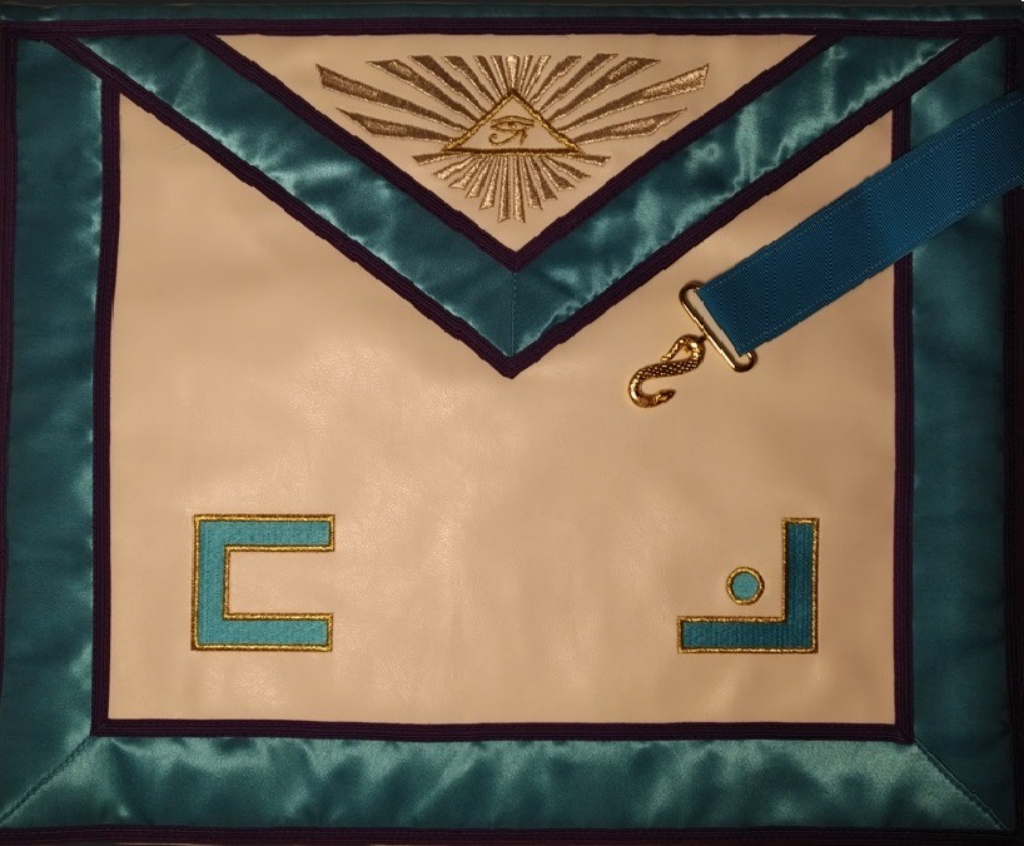
The most conclusive data about the Rite of Memphis in Romania can be found in the August 1867 issue of “Journal des Initiés” magazine, from which we find out that a number of approximately 14 Masonic Lodges practiced this Rite at that time and that Prince Soutzo (Suțu) was as the Worshipful Master of a Lodge in the city of Jassy (Iași), as well as in the February 1884 issue of The Kneph magazine, in the accounts of the Illustrious Brother Constantin Moroiu.
These Lodges, about fourteen in number, work in the Rite of Memphis.
They have managed to rule out any action which would tend to distort their task, and which would have its support in an influence from which they can expect quite different assistance.
The Lodges of Romania were unanimous in delivering themselves from this disturbing action and the enlightened firmness of Prince Soutzo, venerable of the beautiful lodge of Jassy, well supported by the truly Masonic vigilance of the honored brother Henning, will effectively contribute to spreading in Romania a most fruitful moral influence already in action by all their lodges.
– “Journal des Initiés”, 1867, translation from French.
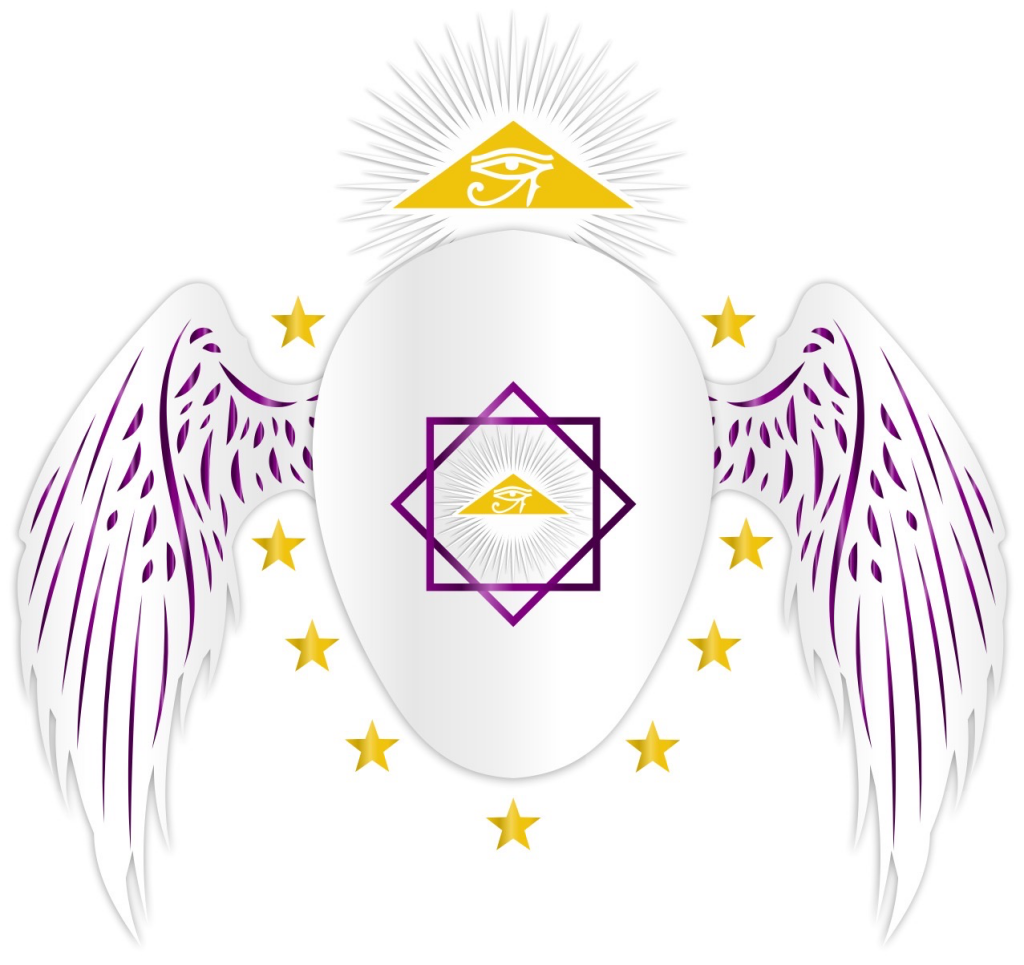
Regarding the Rite of Memphis, the Order was introduced in Romania in 1760 under another name and in a 25-degree lodge, called “L’Etoile Danubienne” (Star of the Danube), which in 1839 adopted the entire Rite of Memphis in 96 degrees and which was publicly consecrated in 1849 by the Illustrious Brothers Marconis and Moutet, whose Constitution exists to this day as the basis of the Sovereign Sanctuary of Romania.
Among the Freemasons who supported this Rite and who belonged to it, were my uncle, C.D Moroiu, my father, M. Moroiu and the great Romanian writer Ion Heliade Rădulescu.
Also, George Filipescu and many other prominent personalities of the 1848s, whose Masonic patents and diplomas, being found during the revolutions of that period in the possession of the Illustrious Brother I.H. Rădulescu, were burned by the Russians, who occupied the country.
My father, fearing arrest, destroyed his diplomas, as did many others during that terrible and disastrous time.
In 1857, after Romania regained its freedom, the Grand Lodge was organized, and in 1861, Brother Marconis, mentions this Supreme Body in his Rameau d’Or.
In 1865 our Grand Lodge was burned by order of Prince Cuza, who opposed us and fearing the Masons, ordered all their documents to be destroyed.
So, nothing was preserved of the traditions we cherished.
From 1873 to 1877 I, assisted by comrades, restored several Masonic Bodies, and revived the Mother Lodge L’Etoile Danubienne”
[Constantin Moroiu – The Kneph, February 1884].
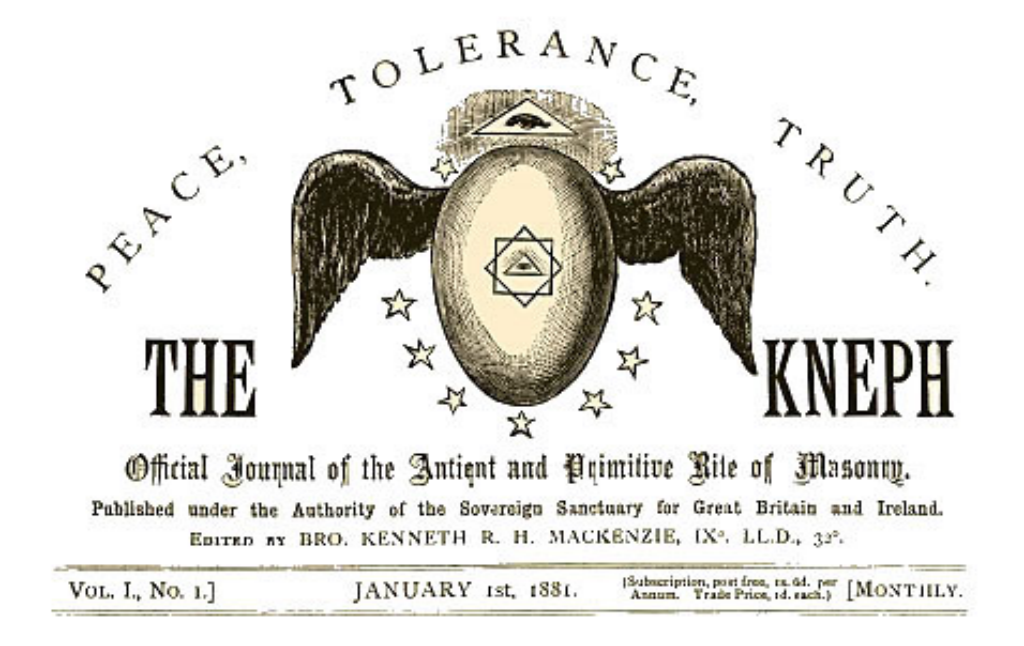
The Rite of Memphis is still practiced nowadays in several countries and under different lineages, both in its symbolic and its high degrees, but since we cannot speak for everyone, we will give Romania as an example.
L’Athénée des Etrangers (working under the auspices of the United Europe Regular Grand Lodge | Marea Lojă Regulară Europa Unită, in the Orient of Bucharest), is the only Masonic Lodge in Eastern Europe that respects the Egyptian initiatory tradition and carries out its work in the symbolic degrees of the Ancient and Primitive Rite of Memphis.
L’Athénée des Etrangers (The Athenaeum of Foreigners) is the de facto successor of the Lodge with the same name found in the registers of the Grand Orient of France, where I.C. Brătianu, one of the personalities who played an important role in the Great Union of 1918 and in the political life of modern Romania, was initiated.
Like its predecessor, L’Athénée des Etrangers is a cosmopolitan project meant to be an adoption Lodge for expats.
In the ranks of the lodge, French, Belgian and American brethren can be found now working in perfect harmony together with the Romanian brethren, crossing all cultural and linguistic barriers.
The high degrees of the Rite, 4° – 95° are conferred within the Romanian Sovereign Sanctuary of the Ancient and Primitive Rite of Memphis 1815, which is based on the John Yarker – Charles Henry Dupont – Robert Ambelain – Fermín Vale Amesti – Juan Vicente Núñez Alvarez lineage.
As we know, Freemasonry is an initiatory society whose origin is lost in the mists of time.
Modern as well as contemporary Freemasonry can be divided into three distinct currents:
∴Regular Freemasonry
∴Liberal Freemasonry
∴Esoteric Freemasonry
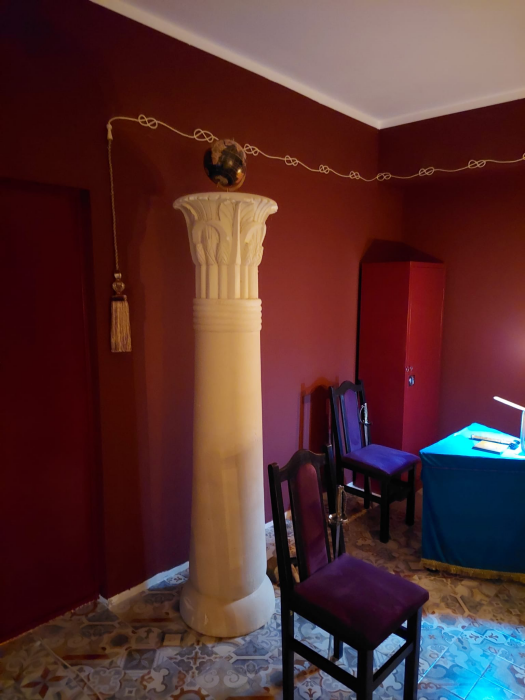
Regular Freemasonry usually refers to the United Grand Lodge of England and the Grand Lodges recognized by it, when the term “regularity” is not further defined (regularity of origin and regularity of practice).
It is the most widespread and the most numerous in terms of membership.
Liberal Freemasonry includes Grand Lodges or Grand Orients usually recognized by the Grand Orient of France.
It is considered irregular, as it admits both men and women in its ranks, and initiation may not be conditioned by professing a belief in God / the Grand Architect of the Universe.
Finally, Esoteric Freemasonry, whose work is centred on the Hermetic, Alchemical and Kabbalistic traditions, teachings, and practices, was established in order to preserve and transmit the Mysteries of Antiquity, embodying the values of the past and at the same time embracing those of the present.
It can be both regular and irregular, recognized or unrecognized by other Masonic Powers, as the Work of Inner Ennoblement is given greater importance than the profane aspects that surround it.
While the activities of Regular and Liberal Freemasonry have become predominantly focused on networking, philosophical reflection, and philanthropic actions, Esoteric Freemasonry invites the neophyte on a journey that is not of this world, remaining true to the millennial Initiatory Tradition.
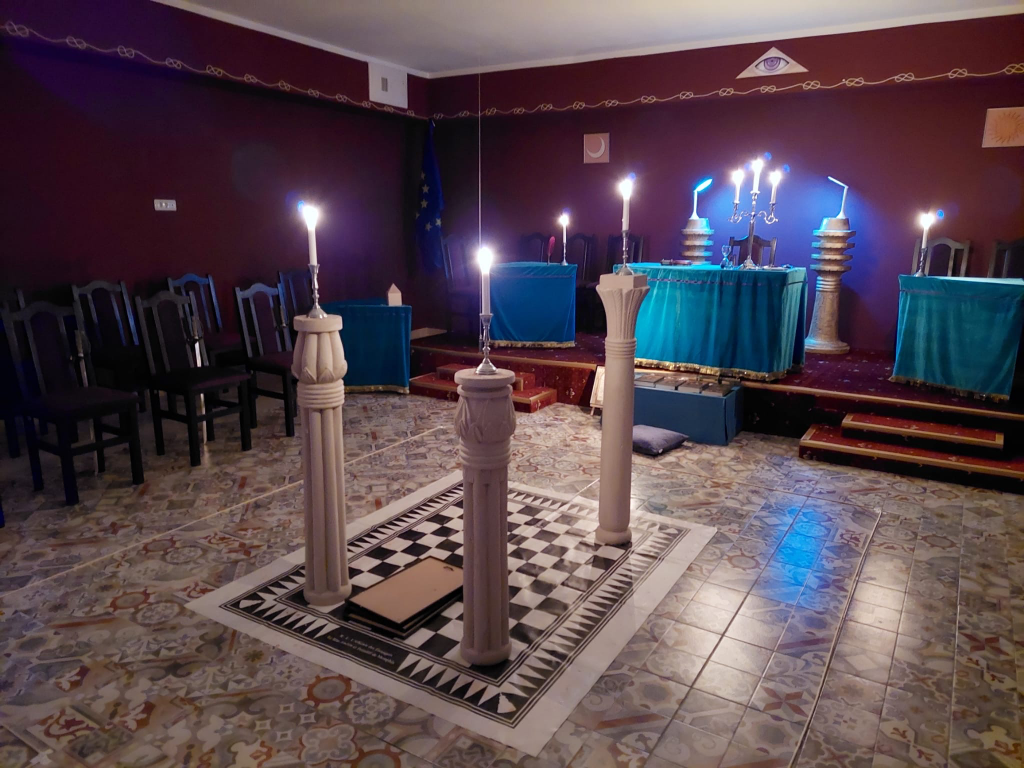
As a structure, the Rite of Memphis Rite recognizes the authority of a “Grand Lodge” or a “Grand Orient” over the first three degrees: Apprentice, Fellowcraft (Mysthe) and Master (Epopte).
The “high degrees” are conferred by separate bodies, united under administration of a Sovereign Sanctuary, led by a Grand Conservative General.
Here we meet the first major difference of the Rite, namely the initiatory algorithm consisting of 95 degrees (91 in its original form), followed by other two administrative degrees.
Through this system of degrees, the Rite preserves and propagates the Hermetic tradition and the characteristic spirituality of Egypt.
Egyptian Freemasonry is distinguished from other Masonic branches by certain characteristics and especially by its main reference to Egypt, whose ancient mysteries it continues.
It is thus complementary to the “Scottish” trend, of chivalrous spirit, for which the Holy Land remains that of Jerusalem, whose Temple would have liked to rebuild.
Of all Masonic branches, the Egyptian branch is the most occult.
The Egyptian ritual aims to extract through its initiations, instructions, and ceremonies a deeper and more refined character of the human being which can be achieved by working on more subtle planes, thus being a relevant rite up to this day, for all sincere seekers of esoteric knowledge and practices.
About the Author

Gabriel Anghelescu is a Romanian Freemason interested in the spiritual and esoteric aspects of the Fraternity.
His passion for esotericism and Freemasonry began at an early age. His first contact with initiatory societies was the International Order of DeMolay, a para-Masonic organization for boys aged 12 to 21. He was initiated in Jacques de Molay Chapter, in Bucharest, where he later served a mandate as the Master Councillor of his Chapter.
He received the Masonic initiation in a French Rite Lodge bearing the distinctive name of Apolodor din Damasc (Apollodorus of Damascus), working under the Grand Orient of Romania and years later he joined L’Athénée des Etrangers Lodge, which works under the auspices of the United Europe Regular Grand Lodge (Marea Lojă Regulară Europa Unită), in the Orient of Bucharest.
He is now the Grand Spokesman of the United Europe Regular Grand Lodge (Romania), a Past Master of L’Athénée des Etrangers Lodge and a member of the Ancient and Primitive Rite of Memphis 1815 (Romania).

The Sanctuary of Memphis or Hermes
[French version]
By: E.J. Marconis
This scarce antiquarian book is a facsimile reprint of the original. Due to its age, it may contain imperfections such as marks, notations, marginalia and flawed pages.
Because we believe this work is culturally important, we have made it available as part of our commitment for protecting, preserving, and promoting the world’s literature in affordable, high quality, modern editions that are true to the original work.

Maçonnerie égyptienne, Rose-Croix et néo-chevalerie
[French version]
By: Gérard Galtier
This book recounts the history of various initiatory movements, from the 18th century to the present day. These movements are characterized by the importance they attach to ancient Egypt, conceived as the source from which all esoteric tradition emanates.
Gérard Galtier, in his book, shows how since the time of Cagliostro – one of the “great initiates” of the past – this Egyptian initiatory current has been transmitted over more than two centuries.
It thus sheds light on the major episodes in the history of occultism during this period: the conditions of appearance of the three Masonic rites of Misraïm, Memphis and Memphis-Misraïm, the influence of the Catholic and neo-chivalric secret societies attached to the legitimist royalist movement of the 19th century, the role of the Rose-Croix, the relationship between certain spiritualist movements and politics, and finally the expectation of a new era…
“Gérard Galtier’s book is a work with which Freemasonry historians will have to reckon.
It is the best current reference for the study of “Egyptian” rites.
Gérard Galtier contributes to highlighting the fact that “occult philosophy” is an integral part of contemporary thought and as such occupies an essential place in the history of ideas.
Gérard Kloppel, former World Grand Master of the Rite of Memphis-Misraïm

Of Memphis and of Misraim, the Oriental Silence of the Winged Sun: History of the Egyptian Rites of Freemasonry; its Rites, Rituals and Mysteries
By: Milko Bogaard
This book offers a historical study of the Masonic “Rite of Memphis-Misraim”, allegedly established in 1881.
The “Rite of Memphis” and the “Rite of Misraim” were originally separate bodies that originated in the first half of 19th century France.
The Rite often refers to Cagliostro (1743-1795), an Italian alchemist, Freemason, healer, and “a key figure of his time”, who allegedly gave the organization the impulse necessary for its development.
This Masonic system of “High Degrees” is sometimes known as “Egyptian Freemasonry” due to the invocation of Hermetic derived esoteric symbolism that is filled with alchemical, occult and Egyptian references.
These degrees blend Christian, Kabbalistic, Neo-Platonic, Pythagorean mysteries, and beyond, within a single Rite of 90 degrees.
“Of Memphis and of Misraim, the Oriental Silence of the Winged Sun” is one of the most comprehensive books of its type ever published in the English language.
That’s why this book is so engaging, with some 400 pages, unveiling the stream of Hermes that passes through Masonry, from the soul of Cagliostro onto the various Egyptian Rites today…
Contents:
1] FRANC-MAÇONNERIE – THE DEVELOPMENT OF HIGH GRADES IN FRENCH MASONRY DURING THE 18TH CENTURY.
2] ON THE ORIGINS OF EGYPTIAN MASONRY, CAGLIOSTRO.
3] RITE DE MISRAÎM.
4] RITE DE MEMPHIS.
5] THE CARBONARI AND THE ORIENTAL RITE.
6] JOHN YARKER AND THE ANTIENT AND PRIMITIVE RITE OF MASONRY.
7] 1881 – THE ANCIENT AND PRIMITIVE RITE OF MEMPHIS-MISRAÎM.
8] 1934 – THE EGYPTIAN RITE OF THE F.U.D.O.S.I.
9] MEMPHIS-MISRAÎM – THE ORDER WORLDWIDE.
10] MM; ITS SYMBOLISM & DEGREES
Appendix: I :
The Egytian Rite of the Theosophists II :
La Grande Hiérophanie and the Arcana Arcanorum III :
The Magi of Memphis
Recent Articles: Freemasonry and Egypt
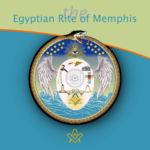 Over time many Masonic Rites have developed, each Rite having its own history, legends, and rituals. Some of them are still practiced today, and others have ceased to exist. The best known and at the same time the most practiced Masonic Rites are the Ancient and Accepted Scottish Rite and the York Rite. Among other Masonic Rites, we can find the Rite of Memphis, to which this article is dedicated. The Rite of Memphis is a branch of Esoteric Freemasonry and specifically one of the Rites of Egyptian Freemasonry. |
 Mason's Marks – from Egypt to Europe? Mason's marks have been a source of intrigue, not only to Freemasons but to historians and archaeologists. The use of simple pictograms have been employed for millennia by artisans to identify their work. But where did they originate and why? |
 Egypt's 'Place of Truth' - The First Operative Stone Masons' Guild? Was ancient Egypt's 'village of the artisans' the first operative stone masons' guild? And was their use of 'identity marks' a forerunner of the Mason's Marks of the cathedral builders of the Middle Ages? Read on for some possible answers… |
 Masonic Miscellanies - Freemasonry & Bees Freemasonry & Bees - what's the buzz? The bee was among the Egyptians the symbol of an obedient people, because, says Horapollo, of all insects, the bee alone had a king. |
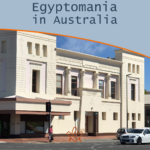 A look at the fascination with Egyptomania and Masonic Temples in Australia |
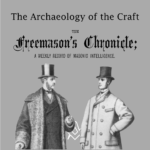 We take a look at the archaeological connection with the Craft, first published in The Freemason's Chronicle - January 30, 1875 |
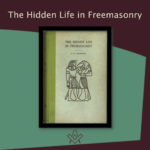 Book Intro - Hidden Life of Freemasonry Introduction to The Hidden Life in Freemasonry (1926) by Charles Webster Leadbeater |
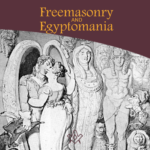 We explore fascinating and somewhat contentious historical interpretations that Freemasonry originated in ancient Egypt. |
 Is Freemasonry esoteric? Yes, no, maybe! |
 Egyptian Freemasonry, founder Cagliostro was famed throughout eighteenth century Europe for his reputation as a healer and alchemist |
masonic knowledge
to be a better citizen of the world
share the square with two brothers

click image to open email app on mobile device


